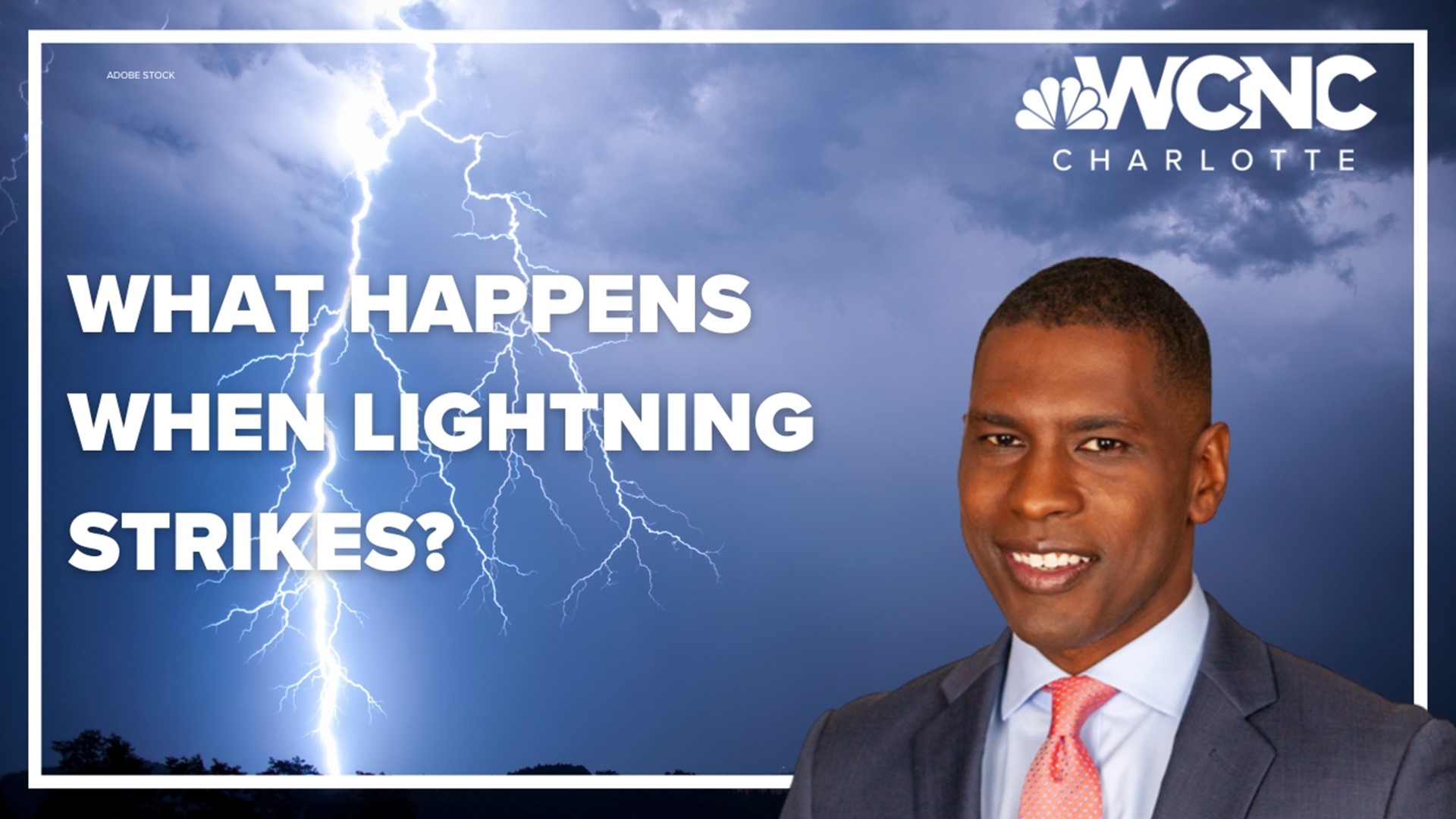CHARLOTTE, N.C. — The Carolinas rank in the top 25 nationwide for the most lightning strikes.
In preparation for spring's severe weather season in the Carolinas, here's a closer look at what you can expect when lightning strikes.
The city of Kannapolis just north of Charlotte is the lighting capital of North Carolina. In 2022, Kannapolis had more lightning events than any other city in the Tar-heel state.
Lightning is a breathtaking weather phenomenon. It goes viral when captured on camera.
June, July, and August account for more than 75 percent of the yearly lightning strikes in North Carolina.
A positive lightning strike is typically 10 times brighter, 10 times stronger, and 10 times louder. Positive lightning bolts originate from the top of the thunderstorm, which allows them to be powerful and deadly.
90% of all lightning bolts are negatively charged and tend to branch out.
On radar, the frequency of lightning strikes can signify a storm is intensifying or weakening.
And we hear thunder when the air expands and contracts due to its intense heat. Because light travels faster than the speed of sound. You will see lightning before you hear thunder.
Thunder can be heard about 10 miles away from the apparent storm. And if you can hear thunder, you are close enough to be struck by lightning.
Do not shelter under trees or open structures, do not touch electronics plugged into the wall, or use running water.
If you are ever at a ball field like this one in Kannapolis, the 30-30 can help keep you safe: If you hear thunder within 30 seconds or less after lightning, go indoors and stay inside for at least 30 minutes after you hear the last sound of thunder.

